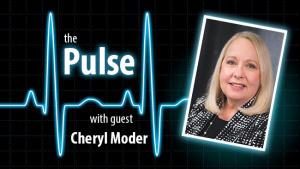12 January 2017
The Pulse: Continuing Childhood Obesity Crisis Requires Population Health Approach
San Diego expert shares collective impact results and community partnership wins
The number of overweight and obese children in the United States has doubled – and quadrupled among adolescents – in the last 30 years. San Diego County is making some strides in combating the epidemic but the rates remain alarming, especially among Hispanic children and those in disadvantaged communities, says Cheryl Moder, founding director of the Childhood Obesity Initiative. Moder shares the latest statistics from San Diego County and the broad-based collaborations she directs in this month’s Pulse podcast.
Employed by the non-profit Community Health Improvement Partners, Moder shares disturbing health consequences – nearly half of children of color born after the year 2000 will develop diabetes in their lifetimes – and the societal costs of the epidemic. “Besides quality of life, the sheer cost is staggering, from direct medical costs to lost productivity.” Forging partnerships to address the epidemic is the most rewarding aspect of her work, Moder says, pointing to seven domains, from healthcare and schools to businesses and community organizations, in which the Initiative is active, educating and promoting programs and policies to reverse the trend.
 “If we had planned our neighborhoods in Southern California to promote obesity, we couldn’t have planned them better,” Moder shares, bemoaning abundant access to fast food and sugar-sweetened sodas, a tremendous reliance on automobiles, and a lack of access to healthy, fresh food and to safe exercise opportunities in many San Diego neighborhoods. Moder is encouraged to see cities implementing a tax on soda and other sugar-sweetened drinks, a move she likens to the tobacco control advocacy she did early in her career. For those passionate about ending the obesity epidemic, Moder says, “there are many roles to play, from city planners and decision makers to school administrators and community advocates, not just medical careers.”
“If we had planned our neighborhoods in Southern California to promote obesity, we couldn’t have planned them better,” Moder shares, bemoaning abundant access to fast food and sugar-sweetened sodas, a tremendous reliance on automobiles, and a lack of access to healthy, fresh food and to safe exercise opportunities in many San Diego neighborhoods. Moder is encouraged to see cities implementing a tax on soda and other sugar-sweetened drinks, a move she likens to the tobacco control advocacy she did early in her career. For those passionate about ending the obesity epidemic, Moder says, “there are many roles to play, from city planners and decision makers to school administrators and community advocates, not just medical careers.”